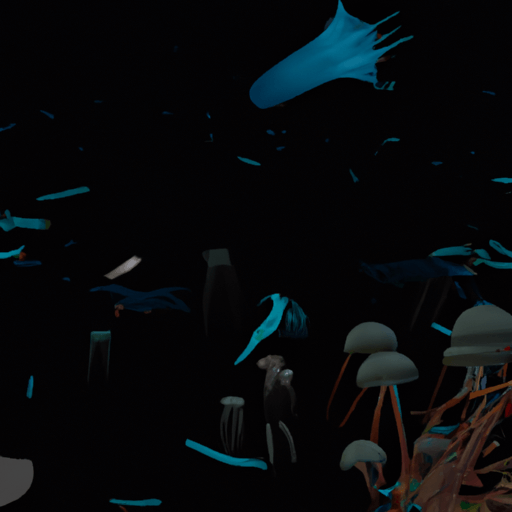How Bioluminescence Influences Ecosystem Dynamics
Introduction to Bioluminescence
Bioluminescence is a spectacular natural phenomenon, commonly associated with certain species of both marine and terrestrial organisms. This display of light results from a complex biochemical reaction which involves the oxidation of a light-emitting molecule called luciferin. The glow can range from blue to green, or occasionally red and is produced either directly by the organisms themselves or through a symbiotic relationship with bacteria.
Bioluminescence in Ecological Relationships
Predator-Prey Interactions
The display of light by bioluminescent organisms significantly influences predator-prey interactions within an ecosystem. For instance, in the depths of the ocean where sunlight cannot penetrate, many predatory organisms utilize bioluminescence to locate and lure their prey. The deep-sea anglerfish is a classic example, as it uses a bioluminescent lure to attract unsuspecting creatures. On the other hand, certain prey species like the squid use bioluminescence to confuse or distract predators, a response commonly referred to as the ‘burglar alarm’ effect.
Reproductive Behaviors
Bioluminescence also plays a vital role in the reproductive behaviors of some species. Fireflies, or lightning bugs, use their characteristic flashing patterns as a mating signal. Each species has a unique flash pattern, which helps potential mates locate and recognize each other during the mating season.
Survival Strategies
Aside from distracting predators and attracting mates, bioluminescence serves as a crucial survival strategy in both terrestrial and marine settings. Some organisms like plankton species produce bioluminescent displays when disturbed, effectively drawing attention to themselves and potentially attracting higher-level predators to their own predators. This is known as the ‘bioluminescent burglar alarm’.
Impact on Ecosystem Health and Resilience
A deeper understanding of bioluminescence contributes significantly towards our broader understanding of ecosystem health and resilience. The luminescent behaviors of certain organisms can serve as indicators of environmental changes or disturbances, offering a unique early warning system for shifts in ecosystem health. Furthermore, studying how organisms use light to survive in extreme environments like the deep sea can shed light on the ecosystem's adaptability and resilience.
In conclusion, bioluminescence is a fascinating natural phenomenon that holds important implications for ecological dynamics. From influencing predator-prey interactions to serving as a survival tool, the luminous displays of these organisms reveal a complex and intricate network of interactions within the ecosystem. Further understanding of this phenomenon will continue to illuminate our knowledge of biodiversity, ecosystem health, and resilience.


















Comments
Leave a Comment